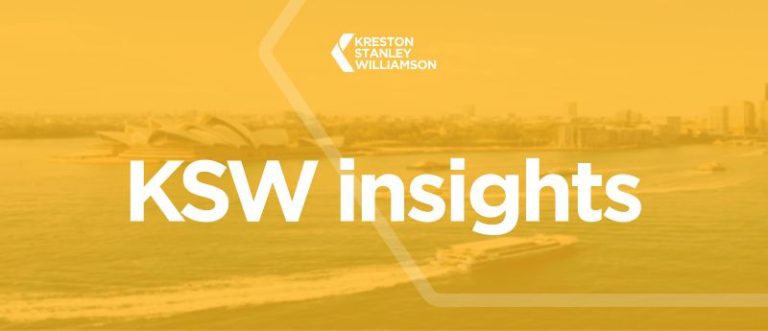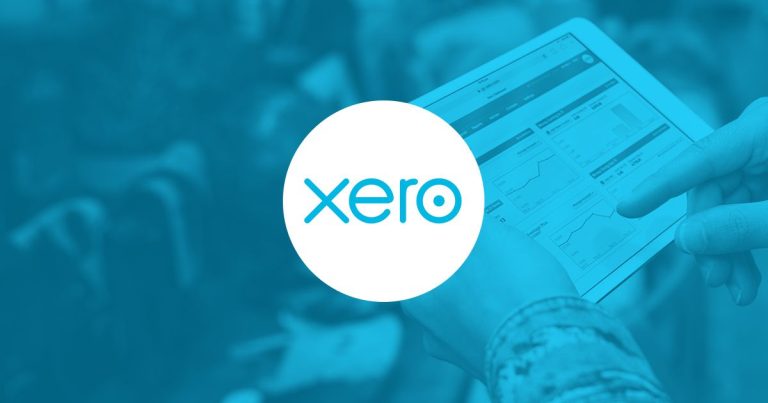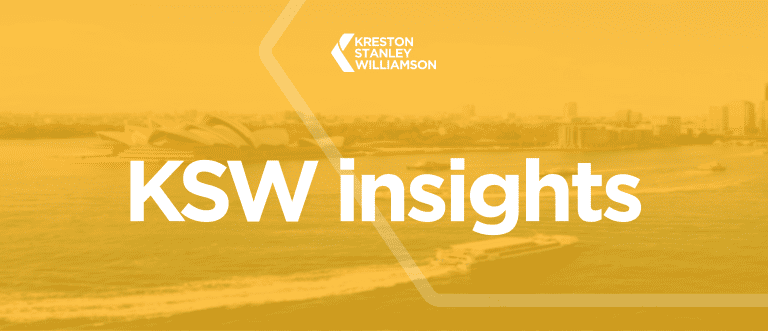Special Edition March 2020 | VOLUME 143
KSW Newsletter for our clients and associates
WHAT CAN YOU GET FROM THE STIMULUS PACKAGES?
As a follow up to our newsletter a couple of weeks ago we now provide an update of what else has been announced. Obviously all of this has only been done as a press release so far, and there may be more detail as the legislation is enacted. We would hope that this is done very soon to take away any uncertainty.
Below we have a summary of what packages are currently available between the announcements on 12 March and 22 March 2020.
SUPPORT FOR BUSINESSES
Boosting Cashflow for Employers
- The original measures announced on 12 March have now been extended so that employers can now receive up to $100,000 and a minimum of $20,000. The details of this incentive are as follows
- Available for businesses that were established at 12 March. We are currently waiting for clarity on whether the business needs to be registered for PAYGW at that date as well.
- For businesses with aggregated annual turnover of < $50M and that employ workers.
- Employers will receive 100% of the PAYG withheld in the March BAS with the maximum first payment increased up to $50,000 (minimum payment is now $10,000). This will be received as a credit against all tax liabilities in the March BAS which is due for lodgement and payment at 28 April.
- An additional payment has been introduced in the July – October period. The additional payment of will be up to another $50,000 over the period up to lodgement of the September BAS. The calculation is quite complex but you will be able to see the mechanics of it in the examples on the below link.
- Support to retain Apprentices and Trainees as follows
- Eligible employers can apply for a wage subsidy of 50% of the apprentice and trainee’s wages for the period 1 January 2020 to 30 September 2020
- Up to a maximum of $21,000 per apprentice or trainee ($7,000 per quarter)
- Available to businesses employing < 20 full time employees
- Apprentice or Trainee must have been in training with a small business as at 1 March 2020
- Employers can register for the subsidy from early April. Final claims by 31 December 2020
- For information on how to apply contact the Australian Apprenticeship Support Network.
- Link to Cash flow assistance for business pdf.
Instant Asset Write Off
- As we reported in our last newsletter about the 12 March package, and nothing has changed since that date, you are able to now instantly write off assets purchased between 12 March 2020 until 30 June 2020, where they cost < $150,000.
- This benefit is extended to businesses with turnover < $500 million.
- The write off threshold will revert back to $1,000 from 1 July 2020.
- There are also business investment incentives with accelerated depreciation deductions available for eligible assets first used or installed by 30 June 2021.
Payroll Tax and NSW tax Relief
The NSW state government has brought is certain concessions to help with businesses and payroll tax liabilities as follows
- Employers with group wages of < $10 million are eligible
- Eligible employers will have their 2019/2020 payroll tax liability reduced by 25%. The final calculation of the reduction will be quantified when the annual reconciliation is lodged by 28 July 2020.
- Until then eligible employers will not have to make payroll tax payments for the months of March, April and May 2020. Once we get clarification we will advise whether the actual payroll tax returns for those months need to be lodged. The actual wages paid will still need to be reported in the annual reconciliation.
- Threshold before payroll tax is applicable to increase to $1 million from 1 July 2020.
- A range of unspecified fees and charges for small businesses including tradespersons, cafes, cars and restaurants will be waived.
There are similar concessions for other states which can be found on the relevant websites for those states. Link to NSW Government – Taxes, duties, levies and royalties.
Credit and facilities support
- Coronavirus SME Guarantee Scheme
- will provide a guarantee of 50% to SME lenders (ie banks) for new unsecured loans to be used for working capital. This hopefully will enhance lenders ability to provide finance to SME’s. Some of the details around this are
- To be eligible the SME turnover < $50 million
- Maximum loan size is $250,000 per borrower
- Loans are for up to 3 years and an initial six month repayment holiday
- Loans will be unsecured so no other assets needed as security
- Loans are still subject to banks credit assessment processes including proving an ability to repay after the first 6 months repayment holiday.
- Commences in early April and available for new loans until 30 September 2020
- will provide a guarantee of 50% to SME lenders (ie banks) for new unsecured loans to be used for working capital. This hopefully will enhance lenders ability to provide finance to SME’s. Some of the details around this are
- Quick and Efficient access to credit for Small Business
- Government will provide an exemption from the usual responsible lending obligations for lenders providing credit to SME for the next 6 months
- Applies to any credit for business purposes, including new credit, credit limit increases and variations and restructures.
- Supporting Flow of Credit and ability for Banks to lend
- Reserve bank announced on 19 March a package that will put downward pressure on borrowing costs for households and businesses. Banks will have access to funding at a fixed rate of 0.25%
- Temporarily relaxing the required bank ratios so as to enable them to more easily lend to businesses.
- Link to Supporting the flow of credit.
Temporary Relief for Financially Distressed Businesses
The elements of this package include
- Temporary higher thresholds and more time to respond to creditor’s demands.
- A creditor can’t issue a statutory demand in the next 6 months unless the debt outstanding is > $20,000
- A company now has 6 months to respond to a creditor’s demand instead of the current 21 days
- Personal bankruptcy cannot be initiated unless the debt outstanding is > $20,000 and this also applies for the next 6 months.
- Temporary Relief from Directors Personal Liability for trading while Insolvent
- To avoid the possibility that company boards will make quick decisions on whether their companies are trading while insolvent, Directors will be relieved from personal liability associated with insolvent trading for the next 6 months
- Applies to debts incurred in the ordinary course of business.
-
- Deferment of payments of certain taxes for up to 6 months. Additionally, as always, there is also the ability to arrange payment arrangements as well.
- Allowing variation of pay as you go instalments (PAYGI) for businesses for the March quarter to zero. This may allow a refund of PAYGI already paid in the September and December quarters
- All taxpayers affected should contact us to determine the best way to access these concessions.
- Link to Assistance for severely affected regions and sectors.
SUPPORT FOR INDIVIDUALS
The federal government has announced the following support to assist individuals during the next 6 months- Expanded eligibility to income support including providing access for permanent employees who are stood down or lose employment, sole traders, self employed and contract workers that meet income tests. There will be reduced assets means testing. Income means testing will still be applicable. Additionally the one week waiting period will be waived.
- New time limited Coronavirus supplement to be paid at a rate of $550 per fortnight. This is to be paid to existing and new recipients of the eligible categories. It will commence from 27 April 2020 and will apply for 6 months.
- Early access to Superannuation is now available. It is a temporary measure for the 2020 and 2021 financial years. Eligible individuals will be able to apply online through myGov to access up to $10,000 of their super before 1 July 2020. They will be able to access a further $10,000 from 1 July 2020 for approximately 3 months. The amount withdrawn will be tax free and not affect your Centrelink benefits. You will be able to apply from mid April. To be eligible you must satisfy one of the following;
- You are unemployed
- You are eligible to receive an eligible social security allowance
- On or after 1 January 2020 you were made redundant, your working hours were reduced by 20% or more, or you are a sole trader and your business was suspended or your turnover reduced by 20% or more.
SUPPORT FOR HOUSEHOLDS
Support for households is forthcoming in the form of- There are two separate tax exempt $750 payments to resident social security and other income support recipients and eligible concession card holders. It will not count as income for social security purposes.
- The first payment (announced on 12 March) will be available between 12 March and 13 April. It will be paid automatically into your bank account from 31 March 2020.
- The second payment will be available on 10 July 2020. It will be paid automatically into your bank account from 13 July 2020.
SUPERANNUATION FUND AND SOCIAL SECURITY RELIEF
To avoid the need to crystallise losses on investments at the worst possible time, the Government is allowing superannuation funds to reduce the superannuation minimum drawdown requirements for account based pensions and similar products by 50% for the 2019/2020 and 2020/2021 income years.
Additionally from 1 May the lower and upper deeming rates for Centrelink purposes will become 0.25% and 2.25% respectively.There is a lot of information to absorb above. Please review and contact your client manager to discuss your specific circumstances.
WHAT SHOULD YOU BE DOING TO SURVIVE THE CRISIS?
Well we can safely say, in the 50 years this firm has been in business, we have never experienced anything like what is going on now. Like all crisis the well managed businesses will have the best chance of surviving.
Really, you need to do whatever you can, and take whatever actions that you need to, so you are able to survive the turmoil.
We encourage you to contact us to discuss the issues with your client manager but in the meantime some of the areas you should be looking at are listed below.- Cash is King. Number 1 priority is to go through your figures and work out , based on whatever assumptions you can formulate in this crazy time, what the cashflow of your business looks like over the next 9 months. Work out where the holes are and start planning how you are going to fill them. Do the forecasts and budgets (both profit & loss and cashflow) on a number of different scenarios. We have always suggested 3 versions with different assumptions – the pessimistic, realistic and optimistic versions. You can then start making plans for all different scenarios once you know the facts.
- Once you know the cashflow position you can start to determine what strategies you need to put in place to ensure your survival. Plan based on the pessimistic scenario above and anything above that is a bonus. The type and level of strategy that you undertake, of the ones listed below, will be dependent on how dire the cashflow situation is during the period.
- Strategies to be considered
- Look at the major costs in your business and start determining what can be cut or decreased. What can be cut now? What are the next set of costs that can be cut if things get worse? What costs must stay as they pay for themselves?
- Chase debtors. With the downturn your debtors are going to be trying to conserve funds as well. You are more likely to be paid if you are vocal in your need to get paid. The loudest to shout is likely to be the one that is paid. This is the most important job in the business in the coming months
- Approach your bank to shore up your finance facilities to cover future holes in cashflow. Take advantage of the concessions shown in the attached article on relaxation of bank lending requirements. Ensure the bank is on board and understands your plan and is supportive of them. Communication is the key here. You will need their help to get through this. In particular the banks are allowing repayment holidays under certain conditions so contact them to see if you are eligible.
- Start looking at staffing levels. Do you need to put off staff and if so how? Permanently or do you cut the number of days being worked? Do you renegotiate wage rates as an interim measure? Are redundancies needed and what will they cost? Research and discussion with HR experts and lawyers and ourselves to ensure it is done properly if you decide to take this measure. To help staff that are put off you may want to educate them with the stimulus available for individuals shown in the attached article.
- Look at any contractors that you engage to see if they can be put off? What are the terms of the current contract you have with them?
- Start looking at supplier contracts. Can you adjust terms or ask for some relief. This includes possibly approaching the landlord if the current lease is becoming onerous. Hopefully landlords and suppliers will be open to some type of relief, temporary or otherwise, until the business environment is better.
- Defer paying creditors for as long as possible. While you will need to keep your good credit name intact, you will need to manage cashflow during the period. This may mean you have to string out some payments. You may need to discuss this with your creditors, especially if you need them to supply product in the future.
- Superannuation has to be paid by the 28th of the month after each quarter. If you currently, as a matter of habit, pay every month there is no reason not to defer the payments until the end of the quarter. It will help with cashflow in the period up till then.
- Remember the payroll tax concessions and take advantage of them over the next few months.
- Check suppliers are going to be able to supply you with the products you need. Do they have capacity? Will they deliver on time? Is the supply of goods and products that you need going to be adversely affected by the crisis?
- Access every concession you can from the stimulus package. What tax breaks can you get? What help will the banks be able to provide you? Are there any concessions available from Centrelink? Every little bit helps so make sure you do your research and be first in line to access the concessions.
If you start with the above strategies you will go a long way to ensuring you survive the turmoil of the next 12 months. You need to look after number 1 and that means you need to be the one that is still around to take advantage of the good times when the current crisis subsides.
Please review the above and discuss the measures with your client manager. We are here to help so please make use of us.Correct as of March 2020.
DISCLAIMER
This newsletter has been produced by Kreston Stanley Williamson as a service to its clients and associates. The information contained in the newsletter is of general comment only and is not intended to be advice on any particular matter. Before acting on any areas contained in this newsletter, it is imperative you seek specific advice relating to your particular circumstances. Liability limited by a scheme approved under Professional Standards legislation.














